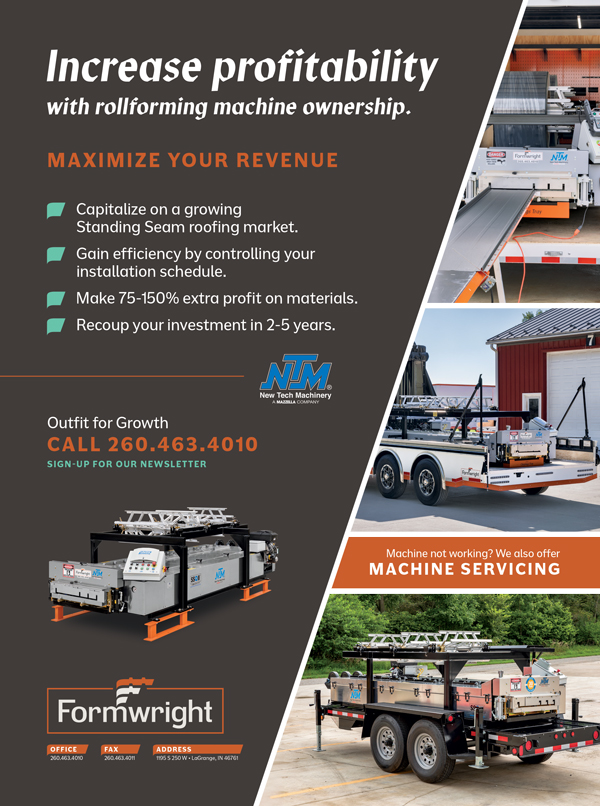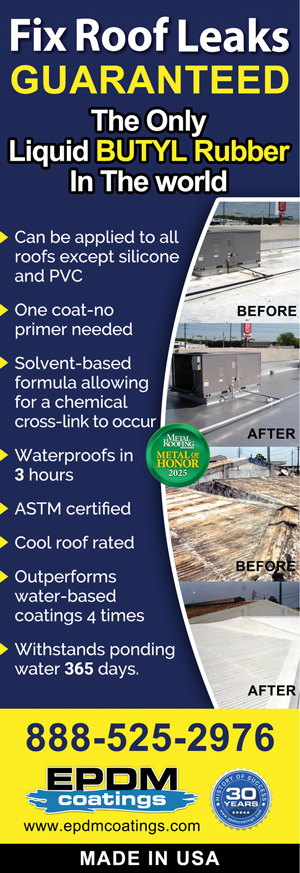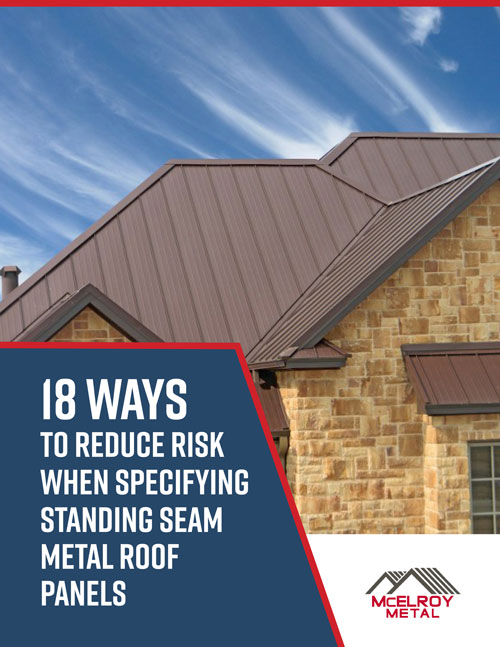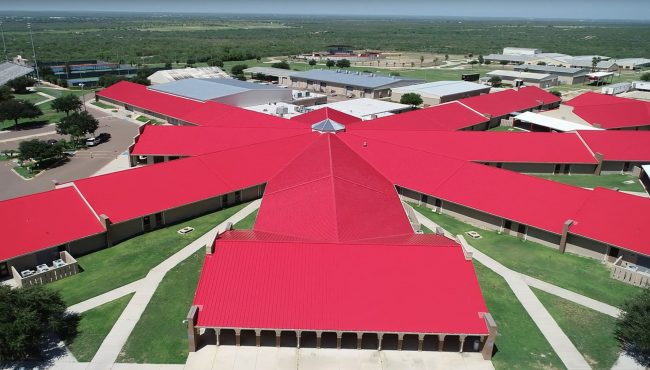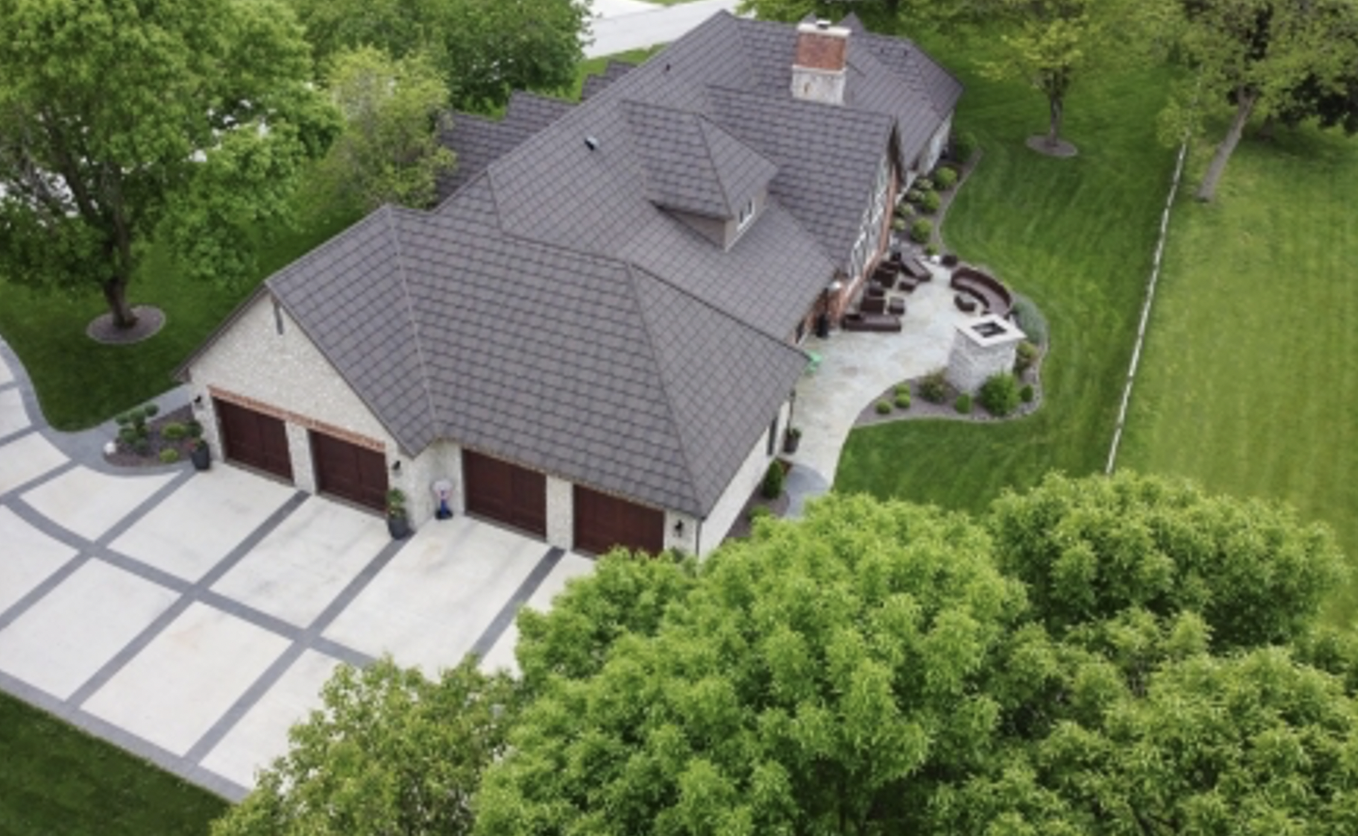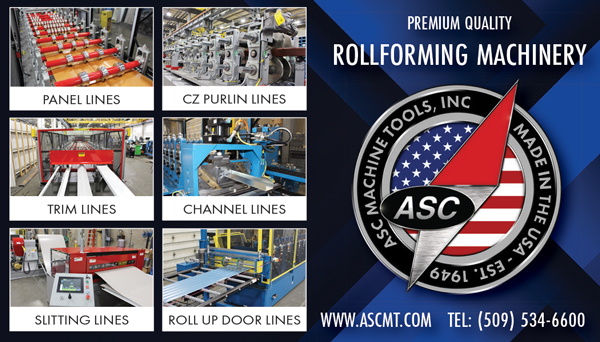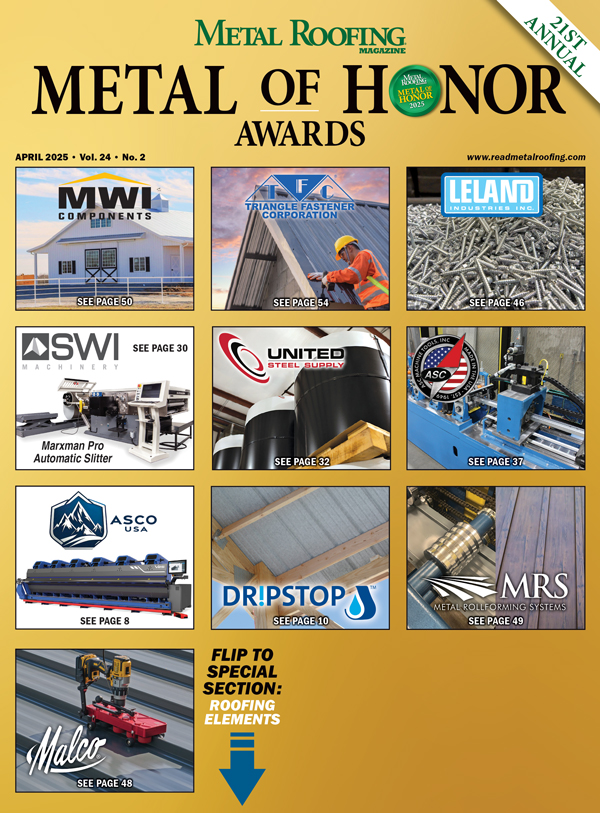By Brian Haraf, Metal Sales Manufacturing Corp.
The metal roofing industry provides a recyclable, energy-efficient alternative to traditional roofing materials. That’s money that your customers can put back in their pockets as they line up to invest in more sustainable building methods. Sustainability is more than just a growing social trend that earns us a gold star with our comrades. It is a responsible and important step that we should take intentionally to safeguard the planet that we call home. For many years we have known that the industrial revolution and modern housing practices have been hurting our environment. And now, as we begin to take responsibility for that, we need to find ways to communicate that value in terms that our customers will understand.
What Does Sustainability Mean?
Besides being a buzzword in the construction industry, what does sustainability really mean? When we talk about green buildings or sustainable building choices, we are talking about intentionally choosing materials and practices that lessen our impact on the environment. Instead of prioritizing costs or looks, we choose building materials based on durability, energy efficiency, and recyclability.
Some of your customers may be motivated to pursue sustainable building practices in order to achieve certifications, appeal to building tenants, and to take advantage of certain tax benefits. Metal roofing panels can help your customers achieve all of these goals, and much more. For example, insulated metal roof panels meet LEED certification requirements for sound transmission and thermal insulation.
How Does Metal Roofing Benefit the Environment?
There’s a good chance that your customers are already invested in the notion of doing good things for the environment, which can make these selling points go over as smooth as butter. But even if they are a little resistant to jumping on the sustainability bandwagon, the potential cost savings can motivate even the most difficult to reach customers. Let’s talk about why metal roofing is the best choice for sustainability.
Recyclability
Real sustainability balances energy efficiency with waste reduction. From a waste reduction viewpoint, metal is one of the easiest and most prolific materials to recycle. The panels that we use today contain up to 40% recycled materials.1. And when they become damaged or live out their useful lives, they are 100% recyclable, which keeps them out of landfills.
Energy-Efficiency
Another important measure of sustainable building products is their energy-efficient performance. It’s not enough to simply keep waste materials out of landfills. In order to be truly environmentally friendly, we need to find ways to lower our carbon footprint every single day. Choosing energy-efficient building materials that reduce the amount of gas or electricity needed to maintain comfortable living environments is a big part of that.

Metal roofs on their own are fairly energy-efficient alternatives to traditional roofing materials. And when manufacturers add solar-reflective coatings, these roofs become ‘cool roofs,’ reducing the urban heat island effects that most roofs create. Many metal roofs exceed ENERGY STAR requirements, making them a great choice for sustainable buildings.
Metal roof panels are also a great choice for pairing with solar panels. The energy-efficient benefits are two-fold with metal roofs and solar panels. First, the added panels help shade the roof and improve its reflective properties to lower energy costs. Plus, the solar panels can help generate clean energy for the building, reducing the building’s energy needs from electricity and fossil fuels.
Longevity and Durability
Lessening our impact on the environment is choosing materials with long lifespans that hold up well to the test of time so that we spend less time and materials replacing them and send less waste to landfills. Step by step, we are trending away from consumerism that prioritizes short lifespans and replaceability and making investments in products that are more durable. Among all of the roofing materials available, metal roofs tend to have two to three times longer lifespans. And, they are made from durable steel that can hold up well for 40 or 50 years.
Most metal roofs are also coated with zinc, a self-healing coating that adds a layer of anti-corrosive protection. In the event that your roof panels are damaged by falling tree branches or debris, it is unlikely that the damage will affect the performance of the panels. The same cannot be said for asphalt shingles which frequently need replaced after hail storms.
How Metal Roofing Measures up to Other Methods
While all of these selling points sound great, you may be wondering how metal roofs stack up against other roofing materials. The most common roofing material over the last 50 years has been asphalt shingle roofs. This product is made from petroleum. Not only does the production of these materials contribute to mining fossil fuels, but they may also off-gas carbon into the environment as the shingles heat up in the sun.
Additionally, asphalt shingles tend to be costly to separate and recycle. This leads to most of the tear-off going to landfills instead of being recycled. And it can take more than 300 years for the material to completely decompose. By comparison, sheet metal roofing is simple and cost-effective to recycle.
Asphalt shingles also contain toxic chemicals. Proponents of these materials will tell you that asphalt is completely safe and can only produce toxic chemicals when heated. But keep in mind that your roof is largely exposed to direct sunlight and heats up well above the ambient temperature. On a 100-degree Fahrenheit day, roof shingles may reach an average temperature of 160-degrees Fahrenheit. Typical summertime temperatures are enough to release the toxic chemicals in your asphalt shingles.
And if that isn’t enough to dissuade customers from choosing asphalt for their roofs, there is a big difference in durability between metal roofing and traditional asphalt shingles. The average life of an asphalt shingle roof is 20 years, while many metal roofs last 50 or 60 years. More frequent replacement means more dollars spent over the lifetime of the building and more waste going to landfills.
There are other roofing materials like cedar shake or slate that are a little less common. Shake shingles are typically considered eco-friendly, but it really depends on the manufacturing process used to create them. After all, real cedar shake shingles require cutting down trees, and engineered shake shingles made from resin may not be sustainable at all.
Slate is another eco-friendly option. It offers a long-lasting, durable lifecycle that helps keep materials out of landfills. But it is heavy and may require additional structural support to use as a roofing material. Plus, the added weight increases shipping costs and may make it a cost-prohibitive roofing material.
Final Thoughts on Pitching Metal Roofing for the Future
As we continue to invest our money into building more sustainability, metal roofing seems like an obvious choice. Metal roofing is made from recyclable materials, adds energy-efficient savings, and lasts a long time. All of these things factor into lowering our carbon footprint and keeping waste materials out of landfills. And when you compare metal roofing side-by-side with traditional asphalt shingles, it seems like an easy choice since asphalt is made from carbon-based petroleum and a variety of toxic chemicals. Selling your customers on the benefits of metal roofing can be as easy as showing them the benefits of metal roofs through a sustainability lens. MR
Brian Haraf is the VP of Sales and Marketing at Metal Sales Manufacturing Corporation [www.metalsales.us.com]. With 21 facilities nationwide, Metal Sales manufactures metal roof and wall panels for the agricultural, commercial, architectural and residential markets since 1963.



